We got up early and drove for about an hour to Perros-Guirec. We walked down to the boat company's building and asked if there was still space for the 9:45 trip out to the island. She said that she would put our name down and to check back in 20 minutes to see if there were enough people signed up to make the trip happen. We walked back to the car and made a cup of tea for the travel mug, knowing that we would probably be glad for it out on the boat. We also put on a few more layers and grabbed our toques & gloves just in case. We headed back to the boat and she said the trip was set to go.
The Seven Islands are just off the coast of Perros-Guirec and are an important nature reserve. There are actually only five islands, but when they were discovered, they mistranslated the name of the islands from Breton to seven. Instead of re-naming them in their books, they just looked for two more "islands" to add to the archipelago – they are really just larger piles of rocks, but oh well.
We set off on the boat with maybe twenty others which was great. It meant that we could move around quite freely on the boat without being in someone’s way or losing our seats. There were three outdoor areas where passengers could watch from: in the bow, stern or on the upper deck. We chose the upper deck since we figured we wouldn’t have as much boat in the way of our viewing. There was also indoor seating in case it was too cold or wet, but luckily we were dry the whole time.
We headed straight out to one of the islands and that was the coldest part since the boat was going fairly quickly and the wind just blew right through you. We were there in 15 minutes and the guide came upstairs with a mike to tell us where to look for the birds and a bit about them. The first island had a colony of gannets on it, the only one in France and the most southernmost in the world. There were 21,880 couples on the one island, which is a lot of birds! It was nesting season so many of them were sitting on their nests.
We learned that gannets mate for life, return to the same nest every year and only lay one egg per year. They eat about 500 g of fish per day which when multiplied by over 42,000 birds is a lot of fish. However, they can fly several hundred kilometres in one day and can go as far as the south of England to find food. It was certainly and active colony with birds flying overhead, fishing and swimming around.
After viewing the gannets, we headed along the shore to another area where other birds are known to nest. We were in luck! We spotted several puffins which was definitely a highlight since we’ve never seen them in the wild and have always wanted to spot them. There are 175 couples on the island; puffins used to be so populous that they were hunted until their numbers dropped so low that hunting was banned in 1912. Imagine hunting a puffin! They are beautiful birds and we switched off between watching them through the binoculars and taking photos. We also saw a nice group of guillemots of which there are only 36 couples. Another rare sight was the razorbill which was sitting on a rock beside the guillemots. There are only 32 couples left on the islands.
The guide said that we were quite lucky to have seen all three of these for such a good amount of time since they are often not so cooperative. They said several times that you are never quite sure what you will see since it isn’t a zoo; often the birds are disturbed by others passing by in kayaks or other boats so they might not be there when they come through. We saw a European Shag which is a type of cormorant, but different from the cormorant we see at home. This one grows a special feather on its head during mating season (to attract the female) and then loses it afterwards.
We continued on past a few more islands and spotted a gray seal, which most of the other tourists were very excited about, more so than when we spotted the puffins. We were not so excited since we have had excellent seal spotting on DeCourcy, and one perched on a rock off in the distance was not a particularly thrilling site compared to that! There are only 30 seals in the archipelago though so you aren’t guaranteed to see them either.
We stopped off at the île aux moines (Monk’s island), so named because they had settled there in the 15th century. The guide said that they were monks who wished to be as unhappy as possible on earth to be happier in heaven. They didn’t stay long on the island since conditions were very harsh and they were poor sailors, losing many ships when they sailed from the island.
After the monks came the pirates and then soldiers to fight against piracy and smuggling. We got off the boat and were given 45 minutes of exploration time. There was a lighthouse at the top and the remains of an old fort and/or remains of the walls from when the monks lived there. The wildflowers were amazing and the views from the top were great.
After our stopover we headed back along the coast to learn about the pink granite coast. It stretches for 10 kilometres and is a beautiful coastline of pink boulders in neat formations. The tide was right so we cruised in to one of the harbours which had beautiful rocks all around. There were red and green posts marking the channel where the boats should go, but the colours were reversed from what they would have been at home. We saw the house where Eiffel used to come on vacation, lighthouses and a chateau.
It was a beautiful boat ride and the guide pointed out the usual, and not so usual formations. We saw the witch, Napoleon’s hat and the wine bottle tipped on its side. We were so glad that we had decided to take the trip and the 2.5 hours we were exploring and bird-spotting were beautiful and sunny!
We then decided to pack up a bit of a lunch and drive over to the parking lot where there was access to the old customs officer’s trail. We enjoyed our quick lunch with nice views of the ocean before setting off on the trail. We walked the couple of kilometres to the next town over along the beautiful coast. There were lots of paths out to the rocks which had been roped off to protect the natural landscape; you could see the difference since they introduced “official” paths because the bushes and wildflowers have grown back in the areas which had been so well trodden before. There were still lots of areas to explore and you could clamber all over the rocks. It was an amazing walk and we enjoyed being out in the sun.
After our walk we drove to camp a few kilometres away. It had direct access to the beach and we had a great view right from our campsite. Brittany campsites definitely win the award for best views from camp!
We did some laundry since it was so nice and sunny and had dinner outside while enjoying the view. The tide was out quite far when we arrived in camp but by the time we went to bed it was right up near the campsite. You would definitely have to pay attention if you were out wandering on the sand or you might have to go the long way around back to camp.
Bird Spotting and the Pink Granite Coast
Saturday, May 18, 2013
 Perros-Guirec, Brittany, France
Perros-Guirec, Brittany, France
Other Entries
-
124Côte d’Opal
Apr 0939 days prior Wimereux, Francephoto_camera14videocam 0comment 1
Wimereux, Francephoto_camera14videocam 0comment 1 -
125Van repaired and a visit to Brighton
Apr 1137 days prior Brighton, United Kingdomphoto_camera16videocam 0comment 1
Brighton, United Kingdomphoto_camera16videocam 0comment 1 -
126Open Air Museum in Arnhem
Apr 1434 days prior Arnhem, Netherlandsphoto_camera55videocam 0comment 2
Arnhem, Netherlandsphoto_camera55videocam 0comment 2 -
127Amsterdam
Apr 1731 days prior Amsterdam, Netherlandsphoto_camera72videocam 0comment 2
Amsterdam, Netherlandsphoto_camera72videocam 0comment 2 -
128Aalsmeer Flower Auction
Apr 1830 days prior Aalsmeer, Netherlandsphoto_camera47videocam 3comment 0
Aalsmeer, Netherlandsphoto_camera47videocam 3comment 0 -
129Cheese Market in Alkmaar
Apr 1929 days prior Alkmaar, Netherlandsphoto_camera62videocam 0comment 0
Alkmaar, Netherlandsphoto_camera62videocam 0comment 0 -
130The Historic Triangle
Apr 2028 days prior Hoorn, Netherlandsphoto_camera81videocam 2comment 3
Hoorn, Netherlandsphoto_camera81videocam 2comment 3 -
131Fishing Village of Marken
Apr 2127 days prior Marken, Netherlandsphoto_camera21videocam 0comment 1
Marken, Netherlandsphoto_camera21videocam 0comment 1 -
132Edam, Tulips & Windmills
Apr 2226 days prior Lisse, Netherlandsphoto_camera49videocam 0comment 1
Lisse, Netherlandsphoto_camera49videocam 0comment 1 -
133Canal Boating on the Bourgogne
May 0117 days prior Migennes, Francephoto_camera110videocam 5comment 3
Migennes, Francephoto_camera110videocam 5comment 3 -
134Trapped by the Floods
May 0414 days prior Fleurey-sur-Ouche, Francephoto_camera48videocam 1comment 0
Fleurey-sur-Ouche, Francephoto_camera48videocam 1comment 0 -
135Canal Boating on the Lateral Canal to the Loire
May 099 days prior Briare, Francephoto_camera99videocam 3comment 4
Briare, Francephoto_camera99videocam 3comment 4 -
136Dinan
May 135 days prior Dinan, Francephoto_camera42videocam 0comment 1
Dinan, Francephoto_camera42videocam 0comment 1 -
137Coastal Walk & Saint Malo
May 144 days prior Saint-Malo, Francephoto_camera21videocam 0comment 0
Saint-Malo, Francephoto_camera21videocam 0comment 0 -
138Fort-la-Latte & Cap Frehel
May 153 days prior Fort-la-Latte, Francephoto_camera40videocam 0comment 0
Fort-la-Latte, Francephoto_camera40videocam 0comment 0 -
139Paimpol & the Sillon de Talbert
May 162 days prior Paimpol, Francephoto_camera24videocam 0comment 0
Paimpol, Francephoto_camera24videocam 0comment 0 -
140Île-de-Bréhat
May 171 day prior Île-de-Bréhat, Francephoto_camera74videocam 1comment 0
Île-de-Bréhat, Francephoto_camera74videocam 1comment 0 -
141Bird Spotting and the Pink Granite Coast
May 18 Perros-Guirec, Francephoto_camera56videocam 1comment 0
Perros-Guirec, Francephoto_camera56videocam 1comment 0 -
142Crepes in Roscoff and the Keremma dunes
May 202 days later Roscoff, Francephoto_camera46videocam 0comment 0
Roscoff, Francephoto_camera46videocam 0comment 0 -
143Beautiful views near Camaret
May 224 days later Camaret-sur-Mer, Francephoto_camera42videocam 0comment 0
Camaret-sur-Mer, Francephoto_camera42videocam 0comment 0 -
144Crepes in Locronan
May 235 days later Locronan, Francephoto_camera20videocam 0comment 0
Locronan, Francephoto_camera20videocam 0comment 0 -
145Quimper
May 246 days later Quimper, Francephoto_camera22videocam 0comment 0
Quimper, Francephoto_camera22videocam 0comment 0 -
146Artist Village of Pont Aven
May 257 days later Pont-Aven, Francephoto_camera8videocam 0comment 0
Pont-Aven, Francephoto_camera8videocam 0comment 0 -
147A relaxing day in Quiberon
May 268 days later Quiberon, Francephoto_camera15videocam 0comment 0
Quiberon, Francephoto_camera15videocam 0comment 0 -
148Megaliths and Thundershowers
May 2810 days later Vannes, Francephoto_camera35videocam 0comment 0
Vannes, Francephoto_camera35videocam 0comment 0 -
149Marais Poitevin
Jun 0114 days later Saint-Hilaire-la-Palud, Francephoto_camera45videocam 1comment 0
Saint-Hilaire-la-Palud, Francephoto_camera45videocam 1comment 0 -
150Ile de Ré
Jun 0316 days later Saint-Martin-de-Ré, Francephoto_camera45videocam 0comment 0
Saint-Martin-de-Ré, Francephoto_camera45videocam 0comment 0 -
151Exploring around Royan
Jun 0619 days later Royan, Francephoto_camera97videocam 0comment 0
Royan, Francephoto_camera97videocam 0comment 0 -
152Sarlat Market, a third visit
Jun 0821 days later Sarlat-la-Canéda, Francephoto_camera50videocam 0comment 0
Sarlat-la-Canéda, Francephoto_camera50videocam 0comment 0 -
153Saint-Cirq-Lapopie and the Cuzals farm museum
Jun 0922 days later Saint-Cirq-Lapopie, Francephoto_camera93videocam 3comment 0
Saint-Cirq-Lapopie, Francephoto_camera93videocam 3comment 0 -
154Millau Viaduct and the Roquefort Caves
Jun 1023 days later Millau, Francephoto_camera37videocam 0comment 0
Millau, Francephoto_camera37videocam 0comment 0 -
155Scenic Drives, Views and Caves near Meyrueis
Jun 1427 days later Meyrueis, Francephoto_camera164videocam 3comment 0
Meyrueis, Francephoto_camera164videocam 3comment 0 -
156Commuting to the Camargue
Jun 1629 days later Saliers par Arles, Francephoto_camera85videocam 0comment 2
Saliers par Arles, Francephoto_camera85videocam 0comment 2 -
157Exploring the Chateau in Les Baux
Jun 1730 days later Les Baux de Provence, Francephoto_camera55videocam 0comment 1
Les Baux de Provence, Francephoto_camera55videocam 0comment 1 -
158Perched Village of Gordes
Jun 2033 days later Gordes, Francephoto_camera45videocam 0comment 0
Gordes, Francephoto_camera45videocam 0comment 0 -
159Great Market, Incredible Ice Cream & Amazing Views
Jun 2134 days later Lourmarin, Francephoto_camera42videocam 0comment 0
Lourmarin, Francephoto_camera42videocam 0comment 0

 Perros-Guirec, Brittany, France
Perros-Guirec, Brittany, France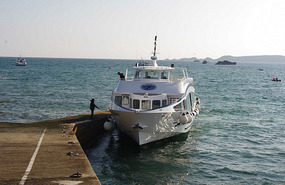
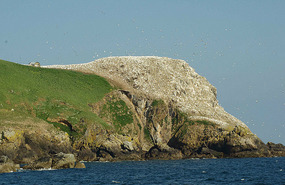
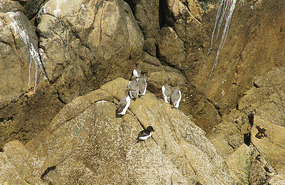
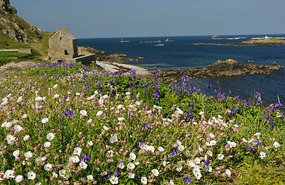
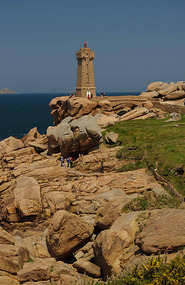
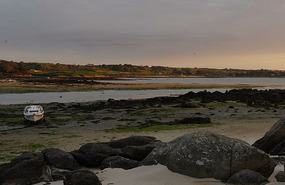





















































2025-05-22